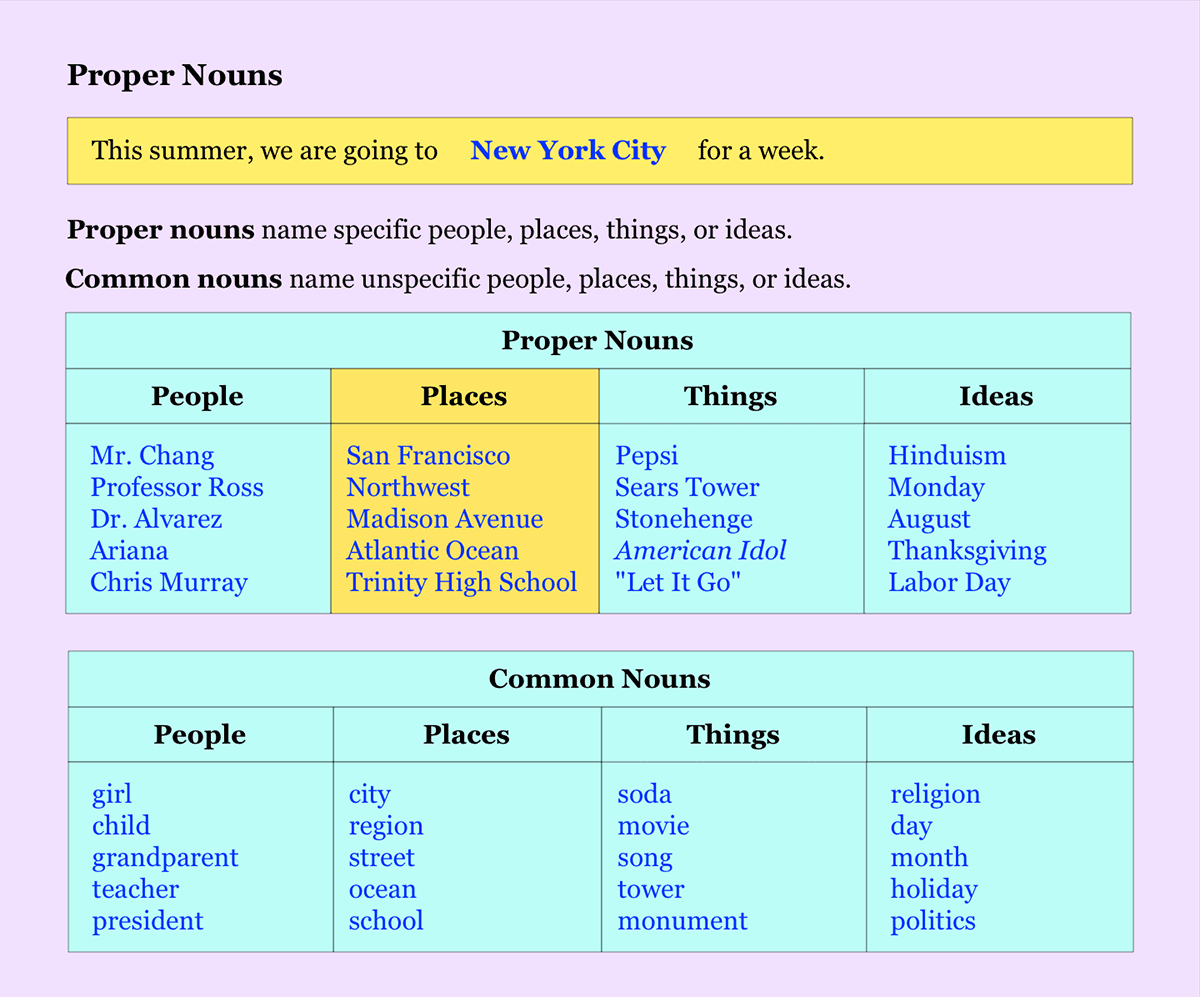Nouns are an essential part of speech that help us identify people, places, things, or ideas. Appropriate nouns are specific nouns that provide more detail and clarity to our language. Using appropriate nouns in our writing can make it more descriptive and engaging for readers.
Here are some examples of appropriate nouns that you can use in your writing:
Examples of Appropriate Nouns
1. Proper Nouns: Proper nouns are specific names of people, places, or things. For example, “John,” “Paris,” and “Mount Everest” are all proper nouns. Using proper nouns in your writing can help provide more context and specificity.
2. Concrete Nouns: Concrete nouns refer to tangible objects that can be perceived by the senses. Examples of concrete nouns include “table,” “car,” and “book.” Using concrete nouns can make your writing more vivid and descriptive.
3. Abstract Nouns: Abstract nouns refer to ideas, concepts, or emotions that cannot be physically touched. Examples of abstract nouns include “love,” “freedom,” and “happiness.” Using abstract nouns in your writing can add depth and complexity to your ideas.
4. Collective Nouns: Collective nouns refer to groups of people, animals, or things. Examples of collective nouns include “herd,” “team,” and “flock.” Using collective nouns can help you refer to a group as a single entity.
5. Compound Nouns: Compound nouns are formed by combining two or more words to create a new noun. Examples of compound nouns include “toothbrush,” “rainbow,” and “basketball.” Using compound nouns can help you be more specific and efficient in your writing.
In conclusion, using appropriate nouns in your writing can enhance your communication and make your ideas more precise and engaging. By incorporating proper nouns, concrete nouns, abstract nouns, collective nouns, and compound nouns into your writing, you can create a more vivid and descriptive language that captivates your readers.
